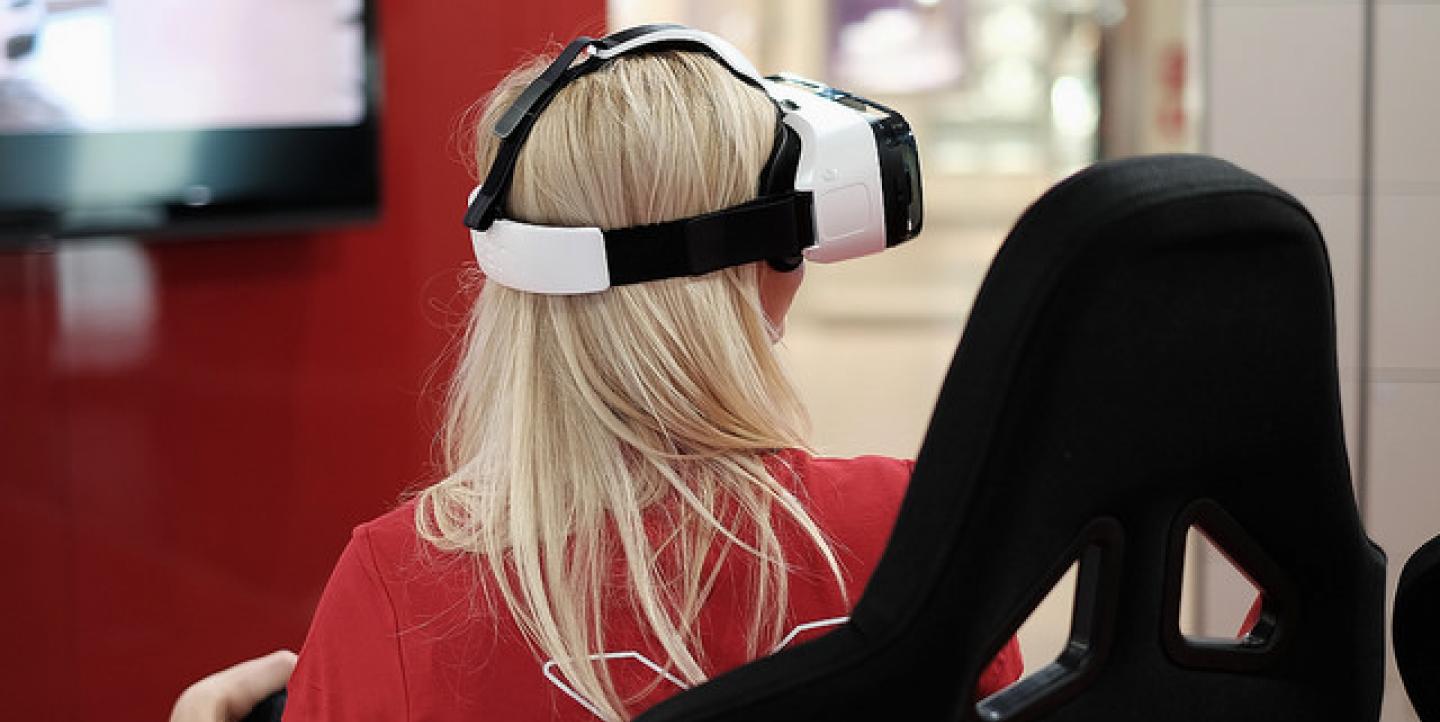Virtual reality journalism, once a niche subset of contemporary reporting, is poised to become a widely used storytelling tool, thanks to products like Oculus Rift, Samsung Gear and Google Cardboard hitting the market.
The movement first began to take hold last year, when Gannett developed Harvest of Change, an interactive portrait of an Iowa farm that complemented a series of articles published in the Des Moines Register. When viewed on a virtual reality (VR) device, the video appears to surround the viewer, immersing him or her in the story.
Since then, outlets like The New York Times, Al Jazeera, ABC News and more have stepped into the world of virtual reality journalism. At the most recent Online News Association conference in Los Angeles, PBS Frontline debuted a virtual reality experience documenting the Ebola crisis. The film, “Ebola Outbreak: A Virtual Journey,” was created in partnership with a content studio called Secret Location and the Tow Center for Digital Journalism.
To help journalists produce meaningful, high-quality journalism in virtual reality, the Tow Center released a Virtual Reality Journalism guide. The report draws from the center’s experiences while producing the PBS Frontline film and takes a comprehensive look at best practices for journalistic storytelling with VR.
Here’s a look at our five biggest takeaways from the report:
Ensure the entire team understands the project before production begins
It might sound obvious, but it bears repeating — each team member should be aware of their chosen story format and know what raw material is needed before beginning a virtual reality production. Educate each individual on the affordances, limitations and characteristics that the virtual reality medium offers.
For example, the team that created the PBS Frontline film merged its editorial and production processes from an early stage to improve each member’s understanding of what it took to produce successful virtual reality content.
Journalists still need to determine their role in virtual reality newsmaking
Virtual reality may finally be ready for mainstream adoption, but that doesn’t mean the art of creating virtual reality journalism has been perfected. In its report, the Tow Center urges journalists to continue to evaluate their own place in the relationship between viewers and content. Since virtual reality is an immersive experience for audiences, a journalist must consider the representation of a subject or place as well as the point of view.
Don’t compromise narrative for the sake of technology
The technologies available for virtual reality storytelling are wide-ranging, but don't get hung up on using expensive effects or equipment for the sake of what seems innovative. The story comes first, and nothing should overshadow it. The traditional pillars of narrative form — characters, actions, emotions, locations and causality — still apply to virtual reality.
Understanding costs and the “tech tradeoff”
Another consideration journalists must make is the equipment they use to produce virtual reality pieces, the report explained. Instead of the most complex and high-tech equipment, production teams can opt for equipment that will reduce the amount of work needed during production and post-production, ultimately cutting costs and allowing you to produce virtual reality stories faster.
Alternately, it’s possible to produce high-quality virtual reality content, as long as you understand the greater investments of time and money that will be required. The report doesn’t advocate for one option over the other — instead, you should determine which method works best for you and your production team on a case-by-case basis.
Continue to explore the possibilities of virtual reality
Just like there are many forms of written and broadcast journalism, there can be many ways to tell a story through virtual reality. Journalists shouldn’t get locked into one storytelling structure, as there may be just as much value in live virtual reality, virtual reality data visualization or gamification, as there is in the traditional long-form documentary.
To read the Tow Center’s full virtual reality journalism report, which includes the full PBS Frontline case study, click here.
Main image CC-licensed by Flickr via Kārlis Dambrāns.

